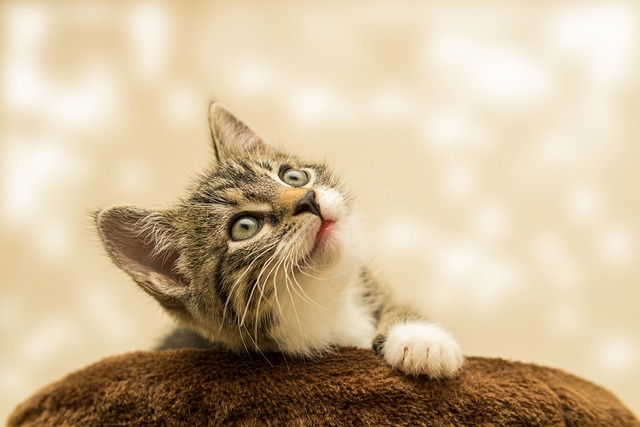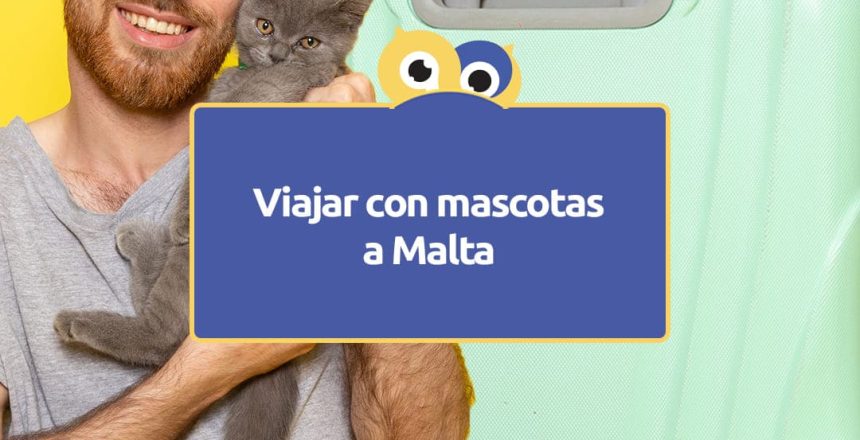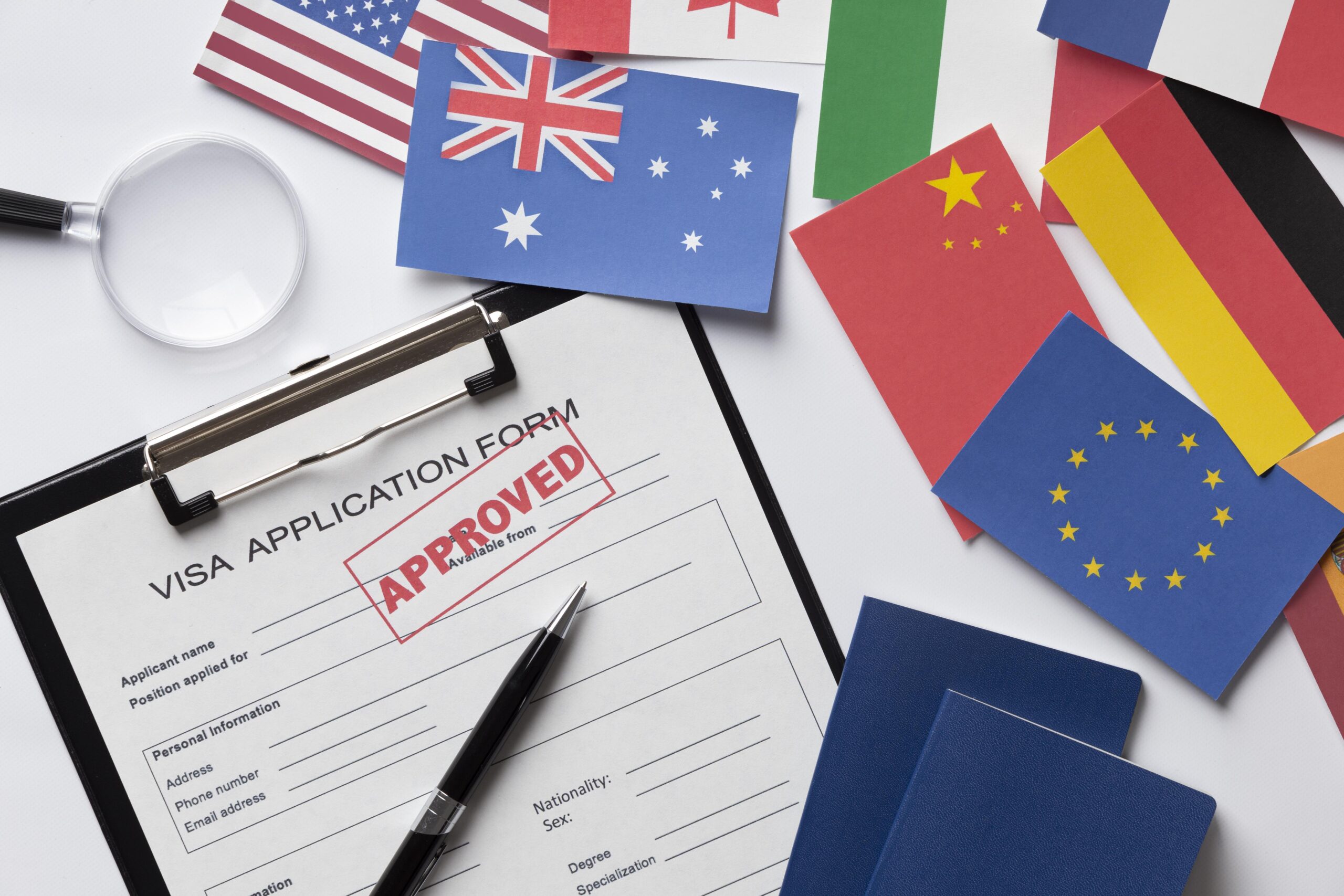Dear friends, today I am going to tell you one of my favorite stories that dates back to before we arrived on the island, when we were planning everything to move to Malta. It turns out that, at our home in Lima, my wife and I had adopted two kittens from the street who quickly became part of our home.
So when we started planning our adventure in Malta, obviously the first thing we did was to start looking for all the information relevant to how we had to go about traveling with pets to Malta.
Well, we didn't find any consolidated information and no one who could tell us exactly all the steps that had to be done. That's why I think this post can be very useful for all those who, like us, are thinking of coming to Malta with their best furry friends.
In this post I will tell you about all the steps we had to do, how everything went and, of course, how our kitties are doing today in Malta.
In addition, this information may be useful for other destinations within the European Union, as these are, in general, harmonized rules for companion animals, such as cats, dogs and ferrets.
If you're not much of a storyteller and want to cut to the chase, you can go directly to the last section of the article where I detail the costs and bullet points 😊
Table of Contents
TogglePrepare well in advance
Keep in mind that, for most Latin American countries, a recommended preparation time of approximately 6 months before the trip will be necessary, since we must meet several requirements. The main requirement is that your pet must be more than 15 weeks old, otherwise it will not be able to enter the EU.
Most Latin American countries, as is the case of Peru, from where we brought our kitties, must comply with the rules concerning countries not listed in Annex II of Regulation (EU) 577/2013 for serological tests against rabies, i.e. we will have to perform a rabies test on our pet.
If your country of origin does not appear in this list, you must perform the serological test. If your country is listed, then you will simply need to bring your current rabies vaccination card.
As we were coming from Peru, we had to take the long way.
The serological test against rabies is perhaps the most time-consuming and complex procedure to perform, firstly, because your pet will not be able to enter the European Union until 3 months after receiving the results. Secondly, because there are very few laboratories that are authorized by the European Union to perform these tests outside the European area. For example, in Peru, as in Colombia, there are none. So your pet's blood sample will have to travel before the pet itself in order to be tested in an authorized laboratory.
Here is the list of authorized laboratories to perform serological tests for rabies.
The most important thing then is to choose a good, trustworthy veterinarian to help us perform this test, preferably with veterinarians who already have experience performing this procedure.
In our case we were very lucky because, in our usual veterinarian, Groomers, in Jorge Chavez (Miraflores), for those from Lima, we were attended by Manuel Cols, a veterinarian with great experience and who helped us a lot in all stages of the process. If you want his contact, write us and we will gladly share it with you.
So the recommendation is to start everything at least 6 months before the trip to avoid stress and to do everything in time.
The first steps: vaccination and microchipping
Dr. Cols recommended that we do the serological test 1 month after the rabies booster, since at that time the kittens would have a higher level of antibodies, because the test, to be valid, has to give a value higher than 0.5 IU/ml.
So the first step was to wait until we had to give them the booster vaccination and also take the opportunity to microchip them.
The microchip is mandatory to enter the European Union, as it is a way to verify that the animal is the same as the one that has been tested and vaccinated, and it is a unique form of internationally valid identification and contains the owner's data and other relevant information about the pet.
The microchip is placed on the top of the back, near the nape of the neck, under the skin, with a gun. It didn't seem to have caused them too much pain and we never had any problems with the reading, nor have they ever shown that it bothers them to have it.
The veterinarian will then give you stickers with the microchip number and a certificate. Take a first reading of the microchip once it is already inserted in the pet to be sure that it can be read and that it corresponds to the number on the stickers/certificate.
The litmus test: the rabies serology test
Once the 30 days of the last vaccine booster have passed, we can now go for the serological test which consists of a blood test that must be processed in one of the laboratories certified by the EU. As we have said before, in many Latin American countries we do not have these laboratories, so the tests will be sent abroad. In our case the veterinarian worked with a laboratory in the USA so the test went there.
One thing that happened to us is that one of our kitties had a very difficult time getting her blood drawn and had a very difficult time. Worse, as we were informed that her test had hemolyzed, perhaps due to mishandling in transport and we had to take her back to have her blood drawn again. My advice is to always make sure that the transport picks up the tests as soon as possible to avoid the risk of the blood hemolyzing, which basically means that the red blood cells break down and are no longer useful for lab analysis.
While the test is being sent, processed and the results are coming in, you have to wait a couple of weeks.
When the tests were ready, the veterinarian called us to give us the good news that the test results of both kittens were satisfactory, that is to say that their defenses were adequate and that the level of antibodies was higher than 0.5 IU/ml.
From the moment you receive this answer, you must wait at least 3 months before you can travel. We did the analysis with a little more time, because in case the test came out with levels below 0.5 IU / ml must be redone and the truth is that in our plans was not to leave our daughters in Lima, for any reason.
This whole process, up to this point (booster shots, vet visits, installation of microchips, blood tests in the USA) cost us about €200 per kitten, which means that we had already invested about €400 here.
Buying pet tickets: in the cabin or in the luggage compartment?
After doing several investigations, we saw that animals traveling underneath, together with their luggage, suffer from stress and in some cases they are unable to endure the trip, so for us it was simply unthinkable to bring them in the luggage compartment of the plane and we opted to bring them in the cabin.
Here it is important to find out the airlines' policies for transporting pets in the cabin. Not all airlines accept pets in the cabin and particularly now with COVID most are restricting it.
Generally airlines that accept pets in the cabin have a weight limit of about 8kg per pet and they must fit in a fabric pet carrier (not hard-shell carriers). The pet carrier must fit under the front seat, so the maximum dimensions are 46 x 28 x 24 cm (check with each airline). Obviously pets must have all the sanitary requirements up to date.
To avoid any complications regarding the dimensions of the cat carrier, we decided to buy it directly from the airline, so we were sure that we would not have any inconvenience when boarding. In this case, as we traveled with AirFrance, we bought the cat carriers directly from them.
Each cat carrier cost us €66 so we are adding an additional €132 to the total bill. The truth is that these AirFrance cat carriers are very good, easy to transport, very well ventilated and so far we use them when we have to move the kitties in Malta.

Also, we had to purchase the tickets by phone because AirFrance only allows two pets per plane, so you have to check if there are no other pets registered on the flight and be sure you have the space. You will not be able to do this if you buy your tickets online. For this reason we buy the tickets six months before the trip.
Our route was Lima - Paris on Air France and then Paris - Malta on Air Malta. Both airlines have an agreement, however, their services are not fully integrated so we had to make the arrangements for the purchase of the kitties' tickets separately. Obviously we also made sure that Air Malta could travel with pets and the airline's rules were very similar to those of Air France, so we opted for that route.
The cost of the tickets to travel in cabin was €180 per kitten on the Lima - Paris route and €80 per kitten on the Paris - Malta route, so we invested €360 + €160 in tickets.
For the anecdote, I have to tell you that I had to contact Air Malta several times by phone from Lima, since it was impossible to arrange the Paris - Malta route through Air France. I also tell you that they made a mistake in the charge made to my credit card and in the end it took me a couple of weeks to make sure that the kittens did have a ticket to go from Paris to Malta and a couple of months to resolve the undue charge on the card.
More permits! Animal health certificates at the point of origin and application for entry at the point of destination.
With the vaccination card up to date, the serological test OK, the microchips, the tickets purchased and the cat carriers ready, the only thing left to do was to wait for the big day of departure and, just before leaving, to complete the last step in Peru: obtain the animal health certificate, which in Peru is issued by an agency called SENASA (National Agricultural Health Service).
To obtain this certificate you must go the same day of the trip, or the day before, to an office outside the Jorge Chavez airport in Lima and wait for the veterinarian on duty to check the animal, take its temperature, etc. and then issue a certificate that includes the animal's name, characteristics and microchip number (be careful that it is exactly the same that appears in the vaccination certificate and in the anti-rabies serological test).
This procedure costs S/. 98 per animal, which is approximately €25. There goes an additional €50. The certificate has an international format in the case of Peru and is in Spanish and English, but it is important to verify from all destinations if this is the case. Otherwise, the certificate must be translated into English.
Alternatively, you can also hire a company to take care of these formalities, since you will probably have several things on your mind, and you may not have enough time in the final stretch. These companies pick up the animal, take it to animal health, process the certificate and return your pet to you while you take care of your last pending matters. We have a very good contact in Peru who helped us a lot, so, if you want, you can write to us and we will gladly put you in contact. We are sure that in all Latin American countries there must be companies that take care of this, please consult with your veterinarian!
In the case of arrival in Malta, we must write an e-mail to [email protected] informing that we are going to land with our pet, and also filling out the form on this website. This will ensure that there is a person on arrival in Malta who can check the animal and the documentation and give the OK for entry into the territory. The office is located in the room where the baggage belts are, on the right hand side if we turn our back to the exit.
In our case, for the transit through Paris we did not have to do any additional paperwork, since there are always customs personnel at the post and when you arrive you simply have to declare that you are entering with a pet and they check the documentation and the pet.
Advice: verify the costs and procedures in your country of origin to obtain the health certificate. This certificate is usually issued by a state agency and is mandatory for the travel of any pet. It is also essential to find out what formalities must be done at our stopover point since there are no direct flights between Latin America and Malta.
Latest preparations: tips to avoid stressing the animal
Since cats are very easily stressed animals, even more so with the change of familiar places, we were a bit worried about how they would cope with the trip.
The first thing we did was to take them to the field, a two-hour drive, to see how they reacted, since normally the drive from the house to the vet (about 5 minutes) was already a real pain in the ass, so we decided to get them used to the hustle and bustle.
We had read that it is better not to do this, as they would be stressed on the trip anyway, but we decided to try it and it worked out very well.
The car ride to the field was a Greek tragedy for both kitties, one threw up, the other hurt her nose trying to open the cat carrier - which she actually succeeded in doing several times - so we also opted to padlock the cat carrier latch for the big day.
When we got to the field, one got really stressed out and the other started exploring, which gave us a little more peace of mind.
The return trip to Lima was a little calmer, but they still had a hard time.
Additionally, since we left our apartment a week before the big day, we also had to take them with us to my aunt's house, where we stayed before leaving. This move was very helpful, because they were already noticing that the family was in a "time of change", but that we were still there.
Dr. Cols also recommended us to buy cat diapers for the trip to put in the bottom of the cat carrier in case they had to pee during the flight, remember that the flight time alone is 11h30 from Lima to Paris! She also recommended us to bring some food cookies for the plane, but not too many, and to avoid giving them too much water before the flight, so they don't have too much urge to urinate.
The big day: how was the experience of traveling with kittens in the cabin?
When the big day arrived, we had to leave well in advance to the airport because we had two suitcases each, plus the kittens and because of the paperwork, we decided to be 3 hours earlier at the airport. So the kittens were finally in their kitty carrier since 4 hours before flying.
At first they seemed a little nervous, but when we got to the airport and did all the paperwork, they calmed down, since we always paid attention to them and cared for them, and that calmed them down. Also, we put them facing each other so they could see and smell each other and know they were not alone.
Normally on most flights they don't allow pets to travel side by side, but we talked to the Air France staff, told them we were a family and they let us travel together. We were lucky as it could have been different.
The truth is that the airline took excellent care of us. They helped us at all times and even in the plane, in the middle of the flight, the chief of cabin came to see the kittens a couple of times and to give us water for them.
The flight lasted 11h30, most of which was very quiet. One of the kitties was quite frightened by turbulence and meowed when the plane moved, but otherwise everything was fine.
When we arrived in Paris, we went to customs, showed them the documents and opened the cat carriers so they could check the health of the kitties. It was really liberating for them to get out of the cat carrier after almost 16 hours inside.
Since our connection to Malta was for the next day, we had to find a hotel at the airport that accepted pets, for which you have to pay a supplement, in our case it was €60, but it applies to both, since in reality what they do is hire a cleaning service to remove the hairs that may have left the animal in case the following guests have some kind of allergy.
Our kitties behaved wonderfully, as neither of them went to the bathroom during the entire trip. When we arrived, we put some diapers in an area of the bathroom, since we had no litter, and one of the kitties went immediately, just to pee. Since she went straight to the diapers, everything was squeaky clean and it was super easy to pick up and clean up.
The next day we repeated the same process, but in a simpler way, since we were already inside the European Union. However, we have to keep in mind that Malta asks for some additional deworming than the rest of the EU countries, so everything must be well detailed in the vaccination card.
Again we were allowed to sit together on the flight from Paris to Malta, subject to verification, but we were also lucky.
When we arrived in Malta, we had already left everything marked on the form we shared with you above, so there was no problem for us to be attended by the animal health department.
There they check the pet again, as well as all the requested documentation and let you enter. It is important to bring everything ready because there was a guy who was bringing his dog from Hong Kong and they were not letting him in because he was missing a piece of paper and the animal health officer used us as an example of how to do things, which made us a little uncomfortable to be honest! We felt very sorry for the dog, after so much hassle, not being able to get out of his carrier.
Final section: the arrival and life in Malta of the kittens
The last thing was to arrive by cab to the house we had rented and we had to wait for the owners outside the house for about an hour because they were late, so the arrival also took its toll.
However, when we arrived, the first thing we did was to go to a petshop We went to buy litter and bowls, as well as scratchers, food and water dishes and food and set up a space for them. They immediately went to the bathroom, after two days of traveling! Amazing how well behaved these kitties really are.
The good thing about Malta is that it is a country catloverIt is very easy to find all kinds of accessories, food and cat litter, even in the bodegas and at a good price. The welcome kit for the kitties cost us about €50 including food.
It is important to clarify that in Malta it is important to make sure that the accommodation you are going to rent is pet friendly and usually they ask you for an additional deposit to take care of the furniture, etc. We had to pay an additional deposit of €300, however, I will not take it into account in the calculation of the expenses, as this will depend on each accommodation you find and normally, if everything is in order at the end of the rental period, you get that money back.
The day after they arrived, we took them to the vet so they could get their European pet passports - that's right, our kitties became Maltese in the blink of an eye and now they're even looking down their noses at us Third-Country Nationals!
To process the European passport, you need to bring all the documents with which you entered Malta and pay for a consultation. We did all the paperwork at VetCare in San Gwann, and it went very well. Here you have the web.
We have to pay a consultation that costs €20 (a single consultation for both kittens) and the cost of the passport is €40 each. That is to say that for this last procedure we spent €100.
The animal's passport contains its data, microchip number, vaccinations, deworming and all the information concerning the pet. Once the passport is issued, it is important to know that you must wait one month before traveling.
Then, with the passport already issued, it will always be much easier to travel with your pet in and out of the EU. You will no longer have to do a serological test and many of the formalities required here and your pet will have a legal status before you get your first ID Card 😊.
Now our kitties live happily here in Malta, they are truly part of the family without a doubt and every day that goes by I am thankful that I made the decision and determination to bring them here.
Costs and procedures to travel to Malta with your pet
Yes, as I said at the beginning, here is a summary of costs and formalities to be taken into account to bring our pet to Malta.
Requirements:
- At least 15 weeks old to be able to travel
- Microchip
- Up to date vaccination and deworming card. Particularly rabies vaccination.
- Check if your country is on the list of countries exempted from rabies serological testing. If not, perform the serological test through an accredited laboratory. Once the results are received, you must wait 3 months before traveling.
- Book cabin/baggage tickets with the airline.
- Have pet carriers of adequate dimensions
- Obtain an animal health certificate from your country of origin.
- Notify Malta Animal Health that you will be arriving with a pet.
- Pass controls upon arrival
- European pet passport application
Costs: approximately €660 per kitten, including everything. You may be able to find cheaper options, but always keep in mind that the priority is the welfare of the pet above all else.
In any case, if you would like assistance in planning your trip with your pet, do not hesitate to contact us and we will be happy to help you with all the steps of your trip, since our priority is to create your personalized plan, every detail is important to us!
Now, I leave you with one last photo of these smug girls. Greetings!







